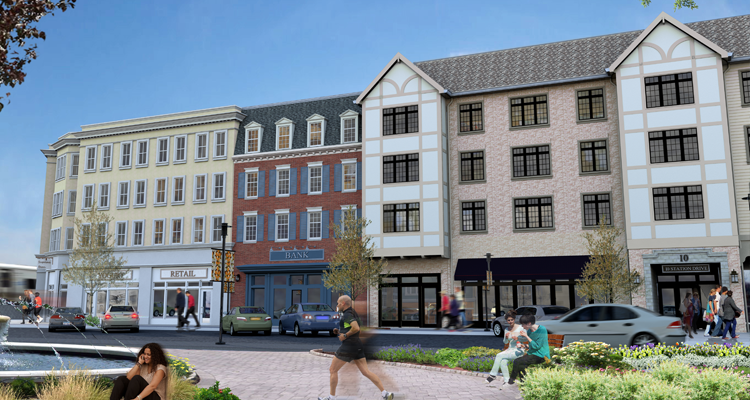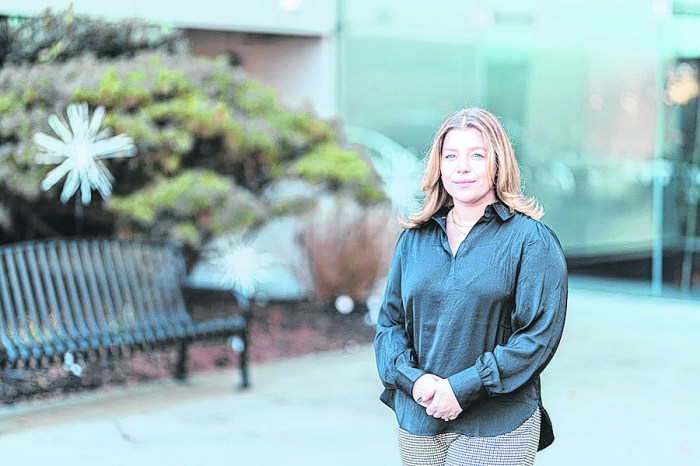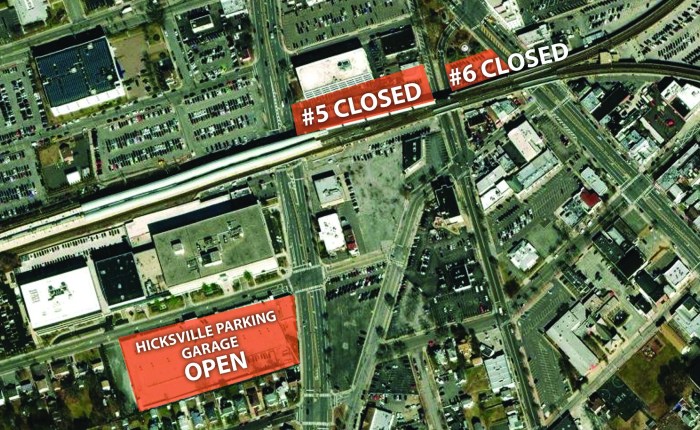Mind the gap—that’s the message from the Long Island Index’s latest report on the enormous difference between the multifamily housing that currently exists and what our region will need to accommodate all the people who want to live here in the future.
A project of the nonprofit Rauch Foundation, the report estimated that LI could gain up to 158,000 households over the next 15 years but only develop 64,000 new housing units, leaving a gap of 94,000 units. If left unaddressed, this shortage could adversely affect the Island’s economy and its quality of life, the authors of the report said.
“I just want to emphasize that affordable housing is one of the critical pieces that Long Island needs to move into the 21st century,” said Nancy Rauch Douzinas, president of the Rauch Foundation. “I don’t think we’ve done it yet, but other places have done it. Long Island should be a choice for young people [who want to live here]… Now is the time for action on this issue.”
The research was conducted by the Regional Plan Association and HR&A Advisors, Inc., both groups based in Manhattan. Under their definition, multifamily housing means any building with three or more attached residential units and includes both rentals and owner-occupied residences such as co-ops and condos. The researchers did not deal with the issue of illegal apartments since it would be so hard to quantify.
The report, titled “Long Island’s Needs for Multifamily Housing: Measuring How Much We Are Planning to Build vs. How Much we Need for Long Island’s Future,” was released on Tuesday at a presentation in Melville hosted by the Long Island Association (LIA), a regional business group.
According to the researchers, one reason LI’s housing costs are so high is that residential construction has been relatively stagnant, lagging behind northern New Jersey, which “has built significantly more housing over the past 35 years than nearby regions.” As a result, its housing stock is more affordable for young workers and they’ve been drawn away from the Island and the Hudson Valley. From 1990 to 2014, Long Island’s population between the ages of 18 and 34 dropped 16 percent. Researchers said that 72 percent of young Long Islanders say they are “likely to leave the area by 2020.”
One possible explanation for that pending exodus is that multifamily housing production is not keeping up with the residents’ changing preferences, the report asserted, noting that “in only five years, nearly one-third of Long Island residents expect to live in multifamily housing, a significant shift from the proportion of residents currently living in such units.” According to the 2015 Long Island Index Survey, 82 percent of LI’s households live in single family dwellings and 17 percent live in multifamily housing. Five years from now, 67 percent said they expect to live in single family homes and 30 percent expect to live in multifamily units.
The report asserted that “most Americans would like to live in walkable mixed-use communities, where amenities, services and their jobs are a short commute away. Younger households have traditionally driven this demand, but baby boomers’ preferences are beginning to change.”
Three case studies included in the report—focusing on Valley Stream, Hicksville and Babylon—show that what the Long Island Index calls “modest changes in zoning regulations” could encourage enough multifamily housing construction to fill the gap. But therein lies the rub.
72 percent of young Long Islanders say they are likely to leave the area by 2020.
“The challenge for the region is that our economic competitiveness is at stake, and yet individual communities will decide which of these various zoning changes to embrace,” said Douzinas. “That necessitates a region-wide discussion to build a broad consensus around what is best for Long Island, and this report is an important step in building that discussion.”
“We really can have a bright future for this region but we need to stay focused on these things,” said Kevin Long, president and CEO of the LIA and co-vice chairman of the Long Island Regional Economic Development Council. He noted that increasing multifamily housing dovetails with other efforts to improve the Island’s transportation infrastructure and create more high-paying jobs in the bio-tech industries starting to grow here.
In Valley Stream, the report noted that rents are unaffordable for many residents despite the surge in high-end, transit-oriented, mixed-use developments. The report recommended establishing a minimum unit size of 850-square feet, increasing maximum lot coverage to 60 percent and increasing the maximum building height from three stories to four stories. These changes would facilitate almost 800 new units of “more affordable, multifamily housing” in the village’s downtown.
For Hicksville, the HR&A and RPA suggested rezoning several commercial zones as multifamily residential zones, imposing 50-percent lot coverage and establishing new minimum unit sizes. In turn, this hamlet could then have about 1,900 new units.
Regarding Babylon, the researchers looked at seven potential sites. They recommended doubling allowable density to 20-to-24 units per acre, establishing a building height limit of three stories, and increasing lot coverage to 50 percent. These zoning changes, described as minor, could provide room for more than 200 new units.
Among the presenters at the LIA’s event was David Sabatino, owner of Sip This!, a coffee shop in Valley Stream, who works on Long Island projects for the Regional Plan Association.
“This spoke to me in several different ways,” he said. “As a small business owner I need foot traffic. I need people living downtown, living near the train station, and I need people investing in my community. As a single family homeowner I need new development and expansion of the tax base to help preserve the things I love about my community.”
He admitted that the zoning changes might be a hard sell.
“It’s a different thinking for Long Island, but it’s something we really need to consider,” he said.
Lawrence C. Levy, executive dean of the National Center for Suburban Studies at Hofstra University, found the new report both “encouraging and discouraging.”
“It was encouraging because it produces more data that makes the case that smart, forward-thinking people have been making on Long Island,” he said. “It shows that there’s incredible potential for economic growth and empowering individuals. But it’s discouraging because when you step back and say, ‘Well, okay, what is it going to take to get this done?’
“It doesn’t really matter that both county executives, the heads of both county legislatures, the heads of more than half the towns are all on the same page,” he continued. “This is a war of attrition like World War I. It has to be done one village zoning board at a time, which means you’ve got to do the work with the civics and the small business people and the political class and bring them together in ways that we’ve only seen in a relative handful of places.”
But those behind the report remain optimistic.
“What we’ve heard this morning,” Douzinas told the audience, “is, ‘Hey, things are changing and things could even be quite different, and it wouldn’t even cost that much.’ It means doing things differently, which we know is not so easy on Long Island…But look at what the results would be!”































